At 49, Branden Spikes isn’t just one of the oldest technologists who has been involved in Elon Musk’s Department of Government Efficiency (DOGE). As the current director of information technology at X/Twitter and an early hire at PayPal, Zip2, Tesla and SpaceX, Spikes is also among Musk’s most loyal employees. Here’s a closer look at this trusted Musk lieutenant, whose Russian ex-wife was once married to Elon’s cousin.
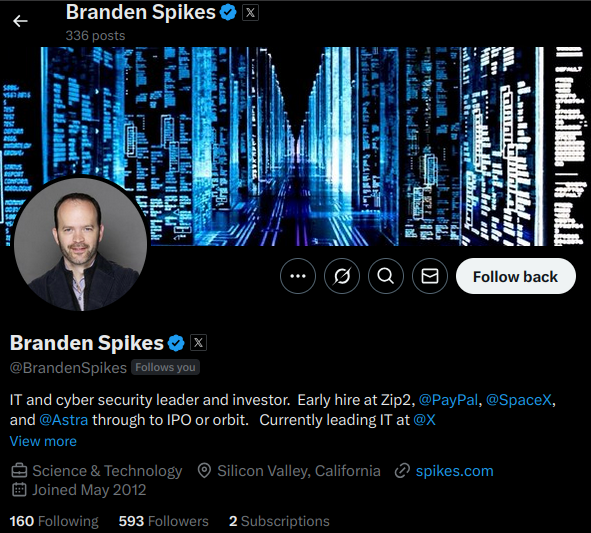
The profile of Branden Spikes on X.
When President Trump took office again in January, he put the world’s richest man — Elon Musk — in charge of the U.S. Digital Service, and renamed the organization as DOGE. The group is reportedly staffed by at least 50 technologists, many of whom have ties to Musk’s companies.
DOGE has been enabling the president’s ongoing mass layoffs and firings of federal workers, largely by seizing control over computer systems and government data for a multitude of federal agencies, including the Social Security Administration, the Department of Homeland Security, the Office of Personnel Management, and the Treasury Department.
It is difficult to find another person connected to DOGE who has stronger ties to Musk than Branden Spikes. A native of California, Spikes initially teamed up with Musk in 1997 as a lead systems engineer for the software company Zip2, the first major venture for Musk. In 1999, Spikes was hired as director of IT at PayPal, and in 2002 he became just the fourth person hired at SpaceX.
In 2012, Spikes launched Spikes Security, a software product that sought to create a compartmentalized or “sandboxed” web browser that could insulate the user from malware attacks. A review of spikes.com in the Wayback Machine shows that as far back as 1998, Musk could be seen joining Spikes for team matches in the online games Quake and Quake II. In 2016, Spikes Security was merged with another security suite called Aurionpro, with the combined company renamed Cyberinc.
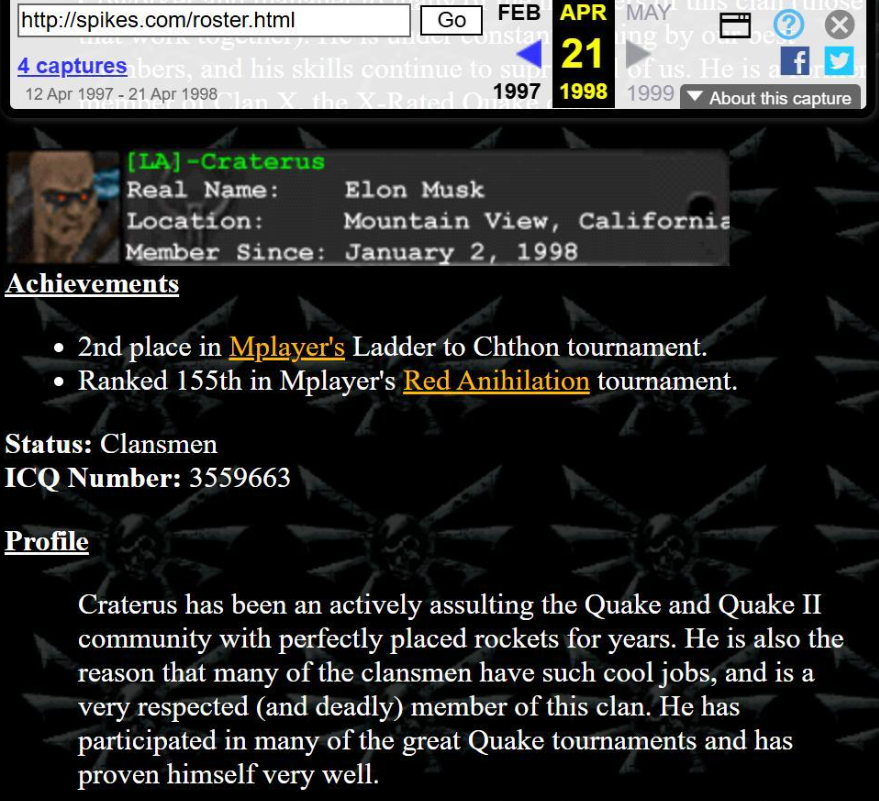
A snapshot of spikes.com from 1998 shows Elon Musk’s profile in Spike’s clan for the games Quake and Quake II.
Spikes’s LinkedIn profile says he was appointed head of IT at X in February 2025. And although his name shows up on none of the lists of DOGE employees circulated by various media outlets, multiple sources told KrebsOnSecurity that Spikes was working with DOGE and operates within Musk’s inner circle of trust.
In a conversation with KrebsOnSecurity, Spikes said he is dedicated to his country and to saving it from what he sees as certain ruin.
“Myself, I was raised by a southern conservative family in California and I strongly believe in America and her future,” Spikes said. “This is why I volunteered for two months in DC recently to help DOGE save us from certain bankruptcy.”
Spikes told KrebsOnSecurity that he recently decided to head back home and focus on his job as director of IT at X.
“I loved it, but ultimately I did not want to leave my hometown and family back in California,” Spikes said of his tenure at DOGE. “After a couple of months it became clear that to continue helping I would need to move to DC and commit a lot more time, so I politely bowed out.”
Prior to founding Spikes Security, Branden Spikes was married to a native Russian woman named Natalia whom he’d met at a destination wedding in South America in 2003.
Branden and Natalia’s names are both on the registration records for the domain name orangetearoom[.]com. This domain, which DomainTools.com says was originally registered by Branden in 2009, is the home of a tax-exempt charity in Los Angeles called the California Russian Association.
Here is a photo from a 2011 event organized by the California Russian Association, showing Branden and Natalia at one of its “White Nights” charity fundraisers:

Branden and Natalia Spikes, on left, in 2011. The man on the far right is Ivan Y. Podvalov, a board member of the Kremlin-aligned Congress of Russian Americans (CRA). The man in the center is Feodor Yakimoff, director of operations at the Transib Global Sourcing Group, and chairman of the Russian Imperial Charity Balls, which works in concert with the Russian Heritage Foundation.
In 2011, the Spikes couple got divorced, and Natalia changed her last name to Haldeman. That is not her maiden name, which appears to be “Libina.” Rather, Natalia acquired the surname Haldeman in 1998, when she married Elon Musk’s cousin.
Reeve Haldeman is the son of Scott Haldeman, who is the brother of Elon Musk’s mother, Maye Musk. Divorce records show Reeve and Natalia officially terminated their marriage in 2007. Reeve Haldeman did not respond to a request for comment.
A review of other domain names connected to Natalia Haldeman’s email address show she has registered more than a dozen domains over the years that are tied to the California Russian Association, and an apparently related entity called the Russian Heritage Foundation, Inc.:
russianamericans.org
russianamericanstoday.com
russianamericanstoday.org
russiancalifornia.org
russianheritagefoundation.com
russianheritagefoundation.org
russianwhitenights.com
russianwhitenights.org
theforafoundation.org
thegoldentearoom.com
therussianheritagefoundation.org
tsarinahome.com
Ms. Haldeman did not respond to requests for comment. Her name and contact information appears in the registration records for these domains dating back to 2010, and a document published by ProPublica show that by 2016 Natalia Haldeman was appointed CEO of the California Russian Foundation.
The domain name that bears both Branden’s and Natalia’s names — orangetearoom.com — features photos of Ms. Haldeman at fundraising events for the Russian foundation through 2014. Additional photos of her and many of the same people can be seen through 2023 at another domain she registered in 2010 — russianheritagefoundation.com.
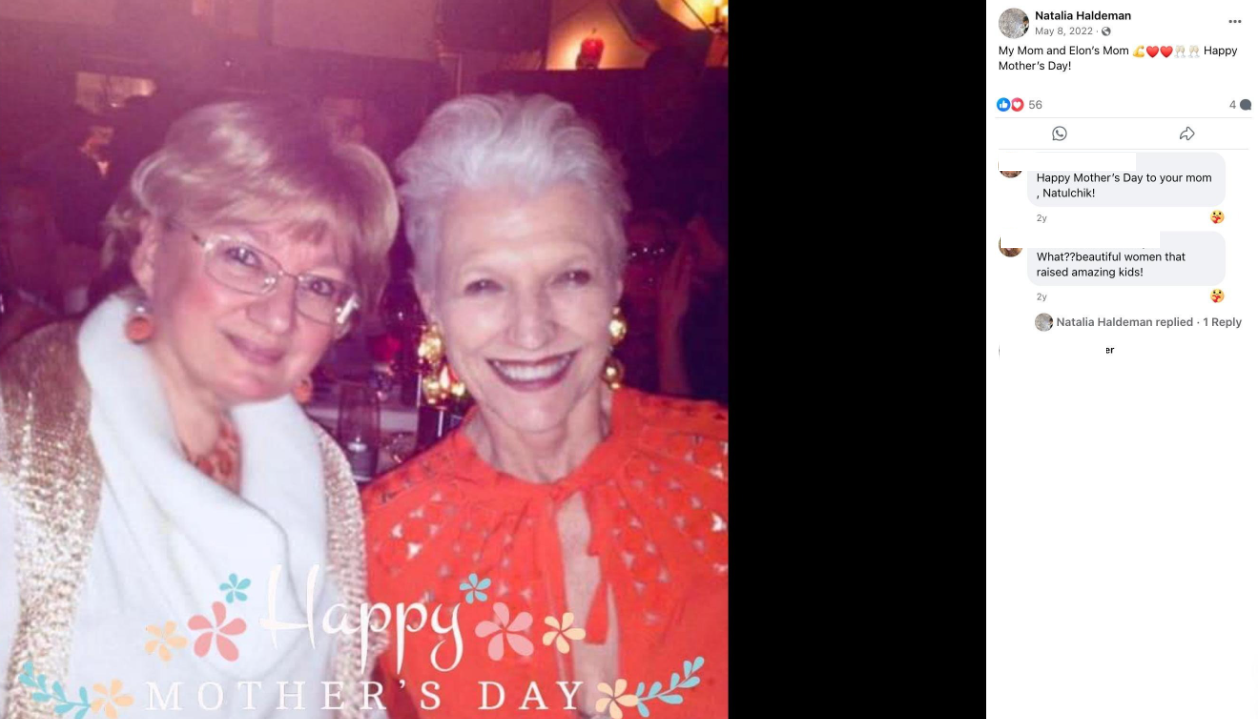
A photo from Natalia Haldeman’s Facebook page shows her mother (left) pictured with Maye Musk, Elon Musk’s mother, in 2022.
The photo of Branden and Natalia above is from one such event in 2011 (tied to russianwhitenights.org, another Haldeman domain). The person on the right in that image — Ivan Y. Podvalov — appears in many fundraising event photos published by the foundation over the past decade. Podvalov is a board member of the Congress of Russian Americans (CRA), a nonprofit group that is known for vehemently opposing U.S. financial and legal sanctions against Russia.
Writing for The Insider in 2022, journalist Diana Fishman described how the CRA has engaged in outright political lobbying, noting that the organization in June 2014 sent a letter to President Obama and the secretary of the United Nations, calling for an end to the “large-scale US intervention in Ukraine and the campaign to isolate Russia.”
“The US military contingents must be withdrawn immediately from the Eastern European region, and NATO’s enlargement efforts and provocative actions against Russia must cease,” the message read.
The Insider said the CRA director sent another two letters, this time to President Donald Trump, in 2017 and 2018.
“One was a request not to sign a law expanding sanctions against Russia,” Fishman wrote. “The other regretted the expulsion of 60 Russian diplomats from the United States and urged not to jump to conclusions on Moscow’s involvement in the poisoning of Sergei Skripal.”
The nonprofit tracking website CauseIQ.com reports that The Russian Heritage Foundation, Inc. is now known as Constellation of Humanity.
The Russian Heritage Foundation and the California Russian Association both promote the interests of the Russian Orthodox Church. This page indexed by Archive.org from russiancalifornia.org shows The California Russian Foundation organized a community effort to establish an Orthodox church in Orange County, Calif.
A press release from the Russian Orthodox Church Outside of Russia (ROCOR) shows that in 2021 the Russian Heritage Foundation donated money to organize a conference for the Russian Orthodox Church in Serbia.
A review of the “Partners” listed on the Spikes’ jointly registered domain — orangetearoom.com — shows the organization worked with a marketing company called Russian American Media. Reporting by KrebsOnSecurity last year showed that Russian American Media also partners with the problematic people-search service Radaris, which was formed by two native Russian brothers in Massachusetts who have built a fleet of consumer data brokers and Russian affiliate programs.
When asked about his ex-wife’s history, Spikes said she has a good heart and bears no ill-will toward anyone.
“I attended several of Natalia’s social events over the years we were together and can assure you that she’s got the best intentions with those,” Spikes told KrebsOnSecurity. “There’s no funny business going on. It is just a way for those friendly immigrants to find resources amongst each other to help get settled in and chase the American dream. I mean, they’re not unlike the immigrants from other countries who come to America and try to find each other and help each other find others who speak the language and share in the building of their businesses here in America.”
Spikes said his own family roots go back deeply into American history, sharing that his 6th great grandfather was Alexander Hamilton on his mom’s side, and Jessie James on his dad’s side.
“My family roots are about as American as you can get,” he said. “I’ve also been entrusted with building and safeguarding Elon’s companies since 1999 and have a keen eye (as you do) for bad actors, so have enough perspective to tell you that Natalia has no bad blood and that she loves America.”
Of course, this perspective comes from someone who has the utmost regard for the interests of the “special government employee” Mr. Musk, who has been bragging about tossing entire federal agencies into the “wood chipper,” and who recently wielded an actual chainsaw on stage while referring to it as the “chainsaw for bureaucracy.”
“Elon’s intentions are good and you can trust him,” Spikes assured.
A special note of thanks for research assistance goes to Jacqueline Sweet, an independent investigative journalist whose work has been published in The Guardian, Rolling Stone, POLITICO and The Intercept.

Every few months, an important ceremony takes place. It’s not splashed all over the news, and it’s not attended by global dignitaries. It goes unnoticed by many, but its effects are felt across the globe. This ceremony helps make the internet more secure for billions of people.
This unique ceremony began in 2010 when Verisign, the Internet Corporation for Assigned Names and Numbers (ICANN), and the U.S. Department of Commerce’s National Telecommunications and Information Administration collaborated – with input from the global internet community – to deploy a technology called Domain Name System Security Extensions (DNSSEC) to the Domain Name System (DNS) root zone in a special ceremony. This wasn’t a one-off occurrence in the history of the DNS, though. Instead, these organizations developed a set of processes, procedures, and schedules that would be repeated for years to come. Today, these recurring ceremonies help ensure that the root zone is properly signed, and as a result, the DNS remains secure, stable, and resilient.
In this blog, we take the opportunity to explain these ceremonies in greater detail and describe the critical role that Verisign is honored to perform.
DNSSEC is a series of technical specifications that allow operators to build greater security into the DNS. Because the DNS was not initially designed as a secure system, DNSSEC represented an essential leap forward in securing DNS communications. Deploying DNSSEC allows operators to better protect their users, and it helps to prevent common threats such as “man-in-the-middle” attacks. DNSSEC works by using public key cryptography, which allows zone operators to cryptographically sign their zones. This allows anyone communicating with and validating a signed zone to know that their exchanges are genuine.
The root zone, like most signed zones, uses separate keys for zone signing and for key signing. The Key Signing Key (KSK) is separate from the Zone Signing Key (ZSK). However, unlike most zones, the root zone’s KSK and ZSK are operated by different organizations; ICANN serves as the KSK operator and Verisign as the ZSK operator. These separate roles for DNSSEC align naturally with ICANN as the Root Zone Manager and Verisign as the Root Zone Maintainer.
In practice, the KSK/ZSK split means that the KSK only signs the DNSSEC keys, and the ZSK signs all the other records in the zone. Signing with the KSK happens infrequently – only when the keys change. However, signing with the ZSK happens much more frequently – whenever any of the zone’s other data changes.
Something to keep in mind before we go further: remember that DNSSEC utilizes public key cryptography, in which keys have both a private and public component. The private component is used to generate signatures and must be guarded closely. The public component is used to verify signatures and can be shared openly. Good cryptographic hygiene says that these keys should be changed (or “rolled”) periodically.
In DNSSEC, changing a KSK is generally difficult, whereas changing a ZSK is relatively easy. This is especially true for the root zone where a KSK rollover requires all validating recursive name servers to update their copy of the trust anchor. Whereas the first and only KSK rollover to date happened after a period of eight years, ZSK rollovers take place every three months. Not coincidentally, this is also how often root zone key signing ceremonies take place.
The notion of holding a “ceremony” for such an esoteric technical function may seem strange, but this ceremony is very different from what most people are used to. Our common understanding of the word “ceremony” brings to mind an event with speeches and formal attire. But in this case, the meaning refers simply to the formality and ritual aspects of the event.
There are two main reasons for holding key signing ceremonies. One is to bring participants together so that everyone may transparently witness the process. Ceremony participants include ICANN staff, Verisign staff, Trusted Community Representatives (TCRs), and external auditors, plus guests on occasion.
The other important reason, of course, is to generate DNSSEC signatures. Occasionally other activities take place as well, such as generating new keys, retiring equipment, and changing TCRs. In this post, we’ll focus only on the signature generation procedures.
A month or two before each ceremony, Verisign generates a file called the Key Signing Request (KSR). This is an XML document which includes the set of public key records (both KSK and ZSK) to be signed and then used during the next calendar quarter. The KSR is securely transmitted from Verisign to the Internet Assigned Numbers Authority (IANA), which is a function of ICANN that performs root zone management. IANA securely stores the KSR until it is needed for the upcoming key signing ceremony.
Each quarter is divided into nine 10-day “slots” (for some quarters, the last slot is extended by a day or two) and the XML file contains nine key “bundles” to be signed. Each bundle, or slot, has a signature inception and expiration timestamp, such that they overlap by at least five days. The first and last slots in each quarter are used to perform ZSK rollovers. During these slots we publish two ZSKs and one KSK in the root zone.
The root zone KSK private component is held inside secure Hardware Security Modules (HSMs). These HSMs are stored inside locked safes, which in turn are kept inside locked rooms. At a key signing ceremony, the HSMs are taken out of their safes and activated for use. This all occurs according to a pre-defined script with many detailed steps, as shown in the figure below.
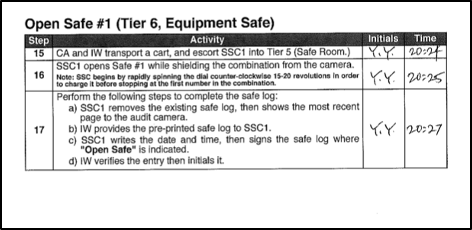
Also stored inside the safe is a laptop computer, its operating system on non-writable media (i.e., DVD), and a set of credentials for the TCRs, stored on smart cards and locked inside individual safe deposit boxes. Once all the necessary items are removed from the safes, the equipment can be turned on and activated.
The laptop computer is booted from its operating system DVD and the HSM is connected via Ethernet for data transfer and serial port for console logging. The TCR credentials are used to activate the HSM. Once activated, a USB thumb drive containing the KSR file is connected to the laptop and the signing program is started.
The signing program reads the KSR, validates it, and then displays information about the keys about to be signed. This includes the signature inception and expiration timestamps, and the ZSK key tag values.
Validate and Process KSR /media/KSR/KSK46/ksr-root-2022-q4-0.xml...
# Inception Expiration ZSK Tags KSK Tag(CKA_LABEL)
1 2022-10-01T00:00:00 2022-10-22T00:00:00 18733,20826
2 2022-10-11T00:00:00 2022-11-01T00:00:00 18733
3 2022-10-21T00:00:00 2022-11-11T00:00:00 18733
4 2022-10-31T00:00:00 2022-11-21T00:00:00 18733
5 2022-11-10T00:00:00 2022-12-01T00:00:00 18733
6 2022-11-20T00:00:00 2022-12-11T00:00:00 18733
7 2022-11-30T00:00:00 2022-12-21T00:00:00 18733
8 2022-12-10T00:00:00 2022-12-31T00:00:00 18733
9 2022-12-20T00:00:00 2023-01-10T00:00:00 00951,18733
...PASSED.
It also displays an SHA256 hash of the KSR file and a corresponding “PGP (Pretty Good Privacy) Word List.” The PGP Word List is a convenient and efficient way of verbally expressing hexadecimal values:
SHA256 hash of KSR:
ADCE9749F3DE4057AB680F2719B24A32B077DACA0F213AD2FB8223D5E8E7CDEC
>> ringbolt sardonic preshrunk dinosaur upset telephone crackdown Eskimo rhythm gravity artist celebrate bedlamp pioneer dogsled component ruffled inception surmount revenue artist Camelot cleanup sensation watchword Istanbul blowtorch specialist trauma truncated spindle unicorn <<
At this point, a Verisign representative comes forward to verify the KSR. The following actions then take place:
The signing program outputs a new XML document, called the Signed Key Response (SKR). This document contains signatures over the DNSKEY resource record sets in each of the nine slots. The SKR is saved to a USB thumb drive and given to a member of the Root Zone KSK Operations Security team. Usually sometime the next day, IANA securely transmits the SKR back to Verisign. Following several automatic and manual verification steps, the signature data is imported into Verisign’s root zone management system for use at the appropriate times in the next calendar quarter.
Keeping the internet’s DNS secure, stable, and resilient is a crucial aspect of Verisign’s role as the Root Zone Maintainer. We are honored to participate in the key signing ceremonies with ICANN and the TCRs and do our part to help the DNS operate as it should.
For more information on root key signing ceremonies, visit the IANA website. Visitors can watch video recordings of previous ceremonies and even sign up to witness the next ceremony live. It’s a great resource, and a unique opportunity to take part in a process that helps keep the internet safe for all.
The post Verisign’s Role in Securing the DNS Through Key Signing Ceremonies appeared first on Verisign Blog.
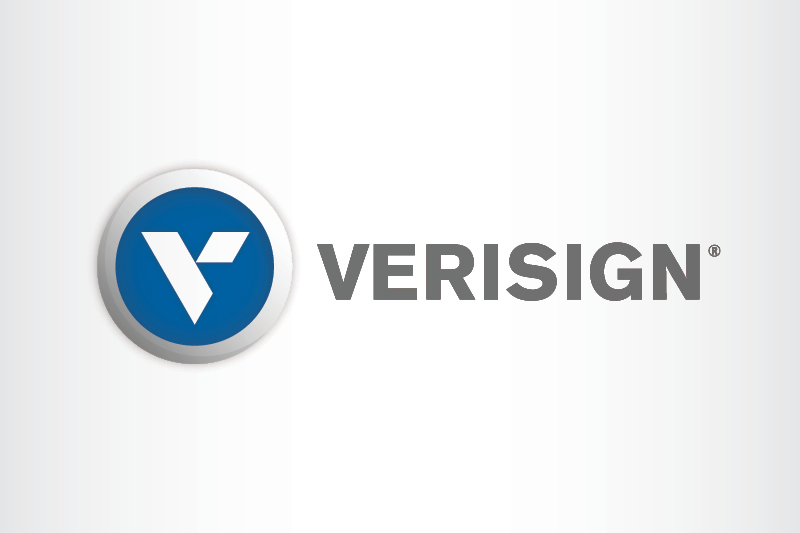
As we passed five years since the Internet Assigned Numbers Authority transition took place, my co-authors and I paused to look back on this pivotal moment; to take stock of what we’ve learned and to re-examine some of the key events leading up to the transition and how careful planning ensured a successful transfer of IANA responsibilities from the United States Government to the Internet Corporation for Assigned Names and Numbers. I’ve excerpted the main themes from our work, which can be found in full on the Internet Governance Project blog.
In March 2014, the National Telecommunications and Information Administration, a division of the U.S. Department of Commerce, announced its intent to “transition key Internet domain name functions to the global multi-stakeholder community” and asked ICANN to “convene global stakeholders to develop a proposal to transition the current role played by NTIA in the coordination of the Internet’s domain name system.” This transition, as announced by NTIA, was a natural progression of ICANN’s multi-stakeholder evolution, and an outcome that was envisioned by its founders.
While there was general support for a transition to the global multi-stakeholder community, many in the ICANN community raised concerns about ICANN’s accountability, transparency and organizational readiness to “stand alone” without NTIA’s legacy supervision. In response, the ICANN community began a phase of intense engagement to ensure a successful transition with all necessary accountability and transparency structures and mechanisms in place.
As a result of this meticulous planning, we believe the IANA functions have been well-served by the transition and the new accountability structures designed and developed by the ICANN community to ensure the security, stability and resiliency of the internet’s unique identifiers.
But what does the future hold? While ICANN’s multi-stakeholder processes and accountability structures are functioning, even in the face of a global pandemic that interrupted our ability to gather and engage in person, they will require ongoing care to ensure they deliver on the original vision of private-sector-led management of the DNS.
The post ICANN’s Accountability and Transparency – a Retrospective on the IANA Transition appeared first on Verisign Blog.